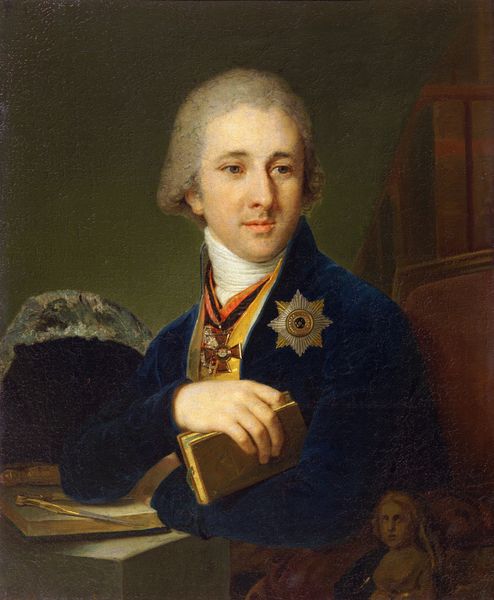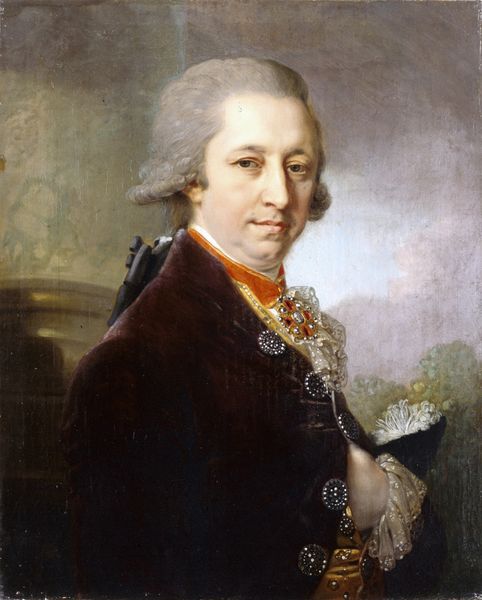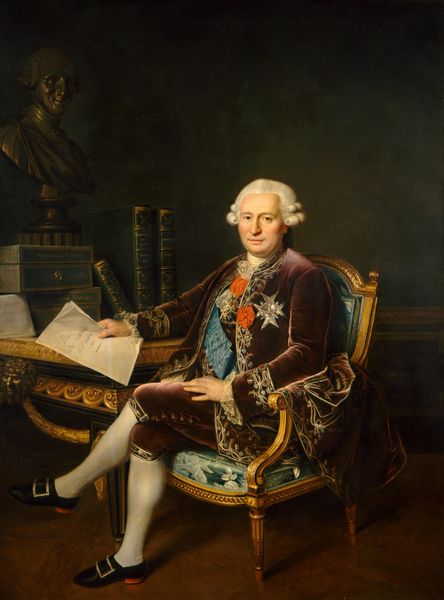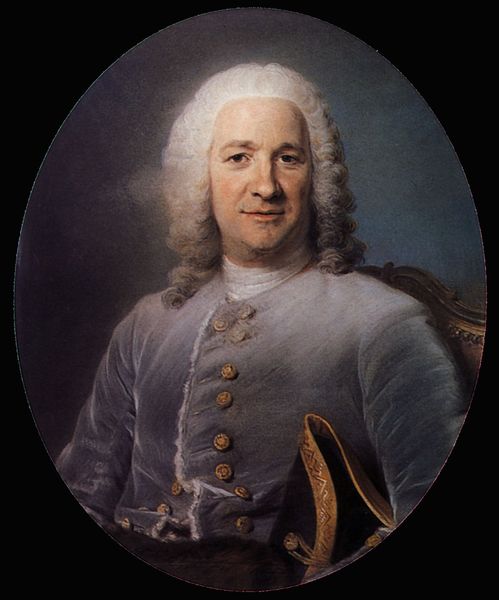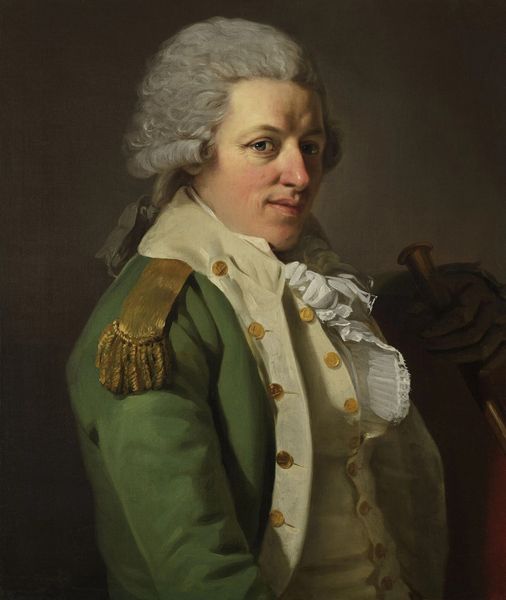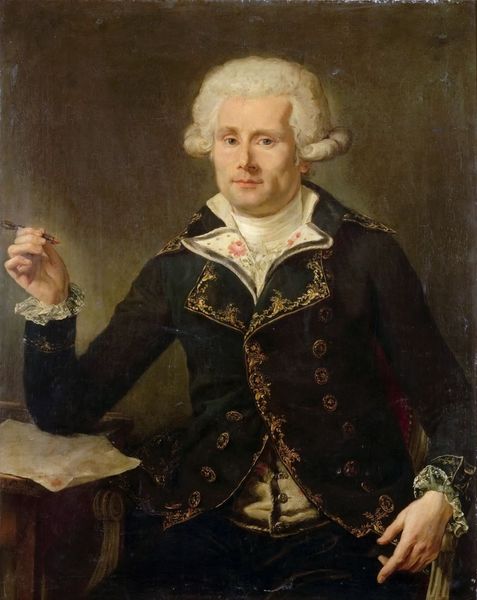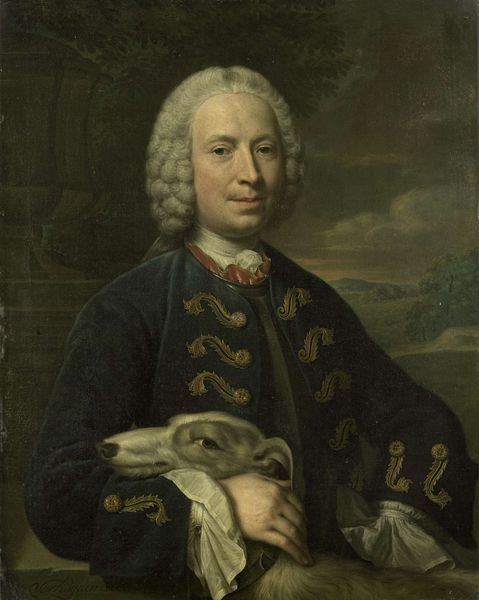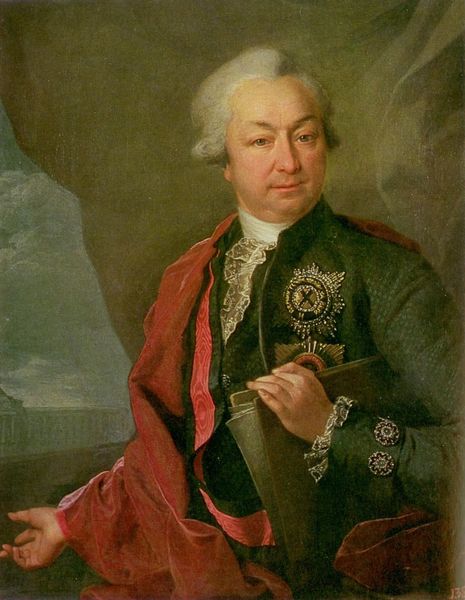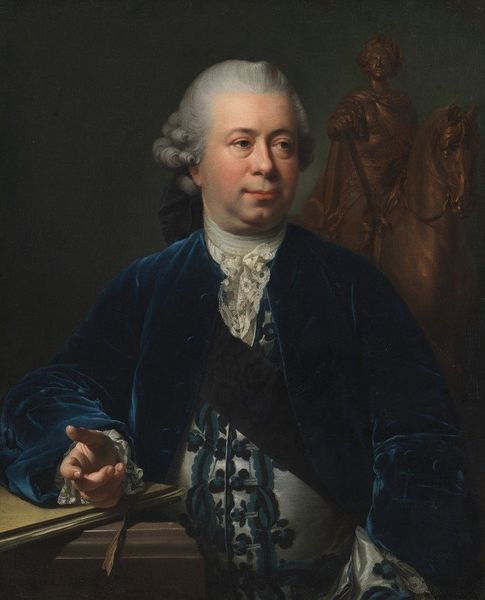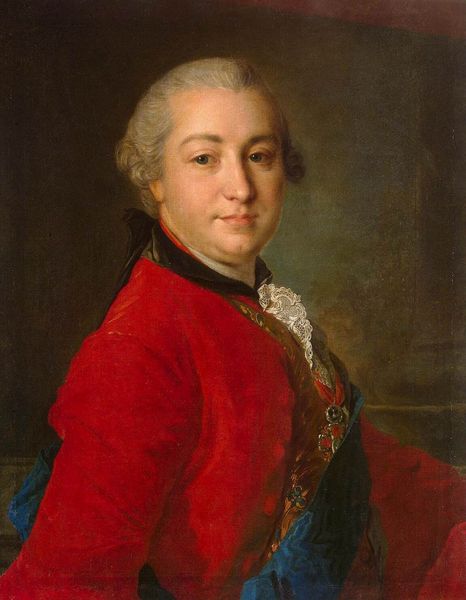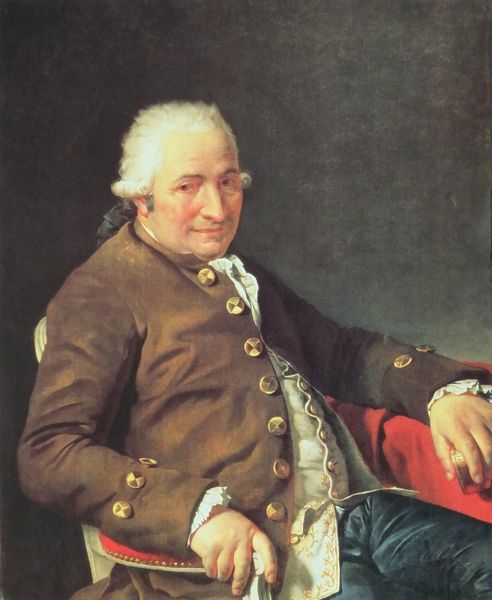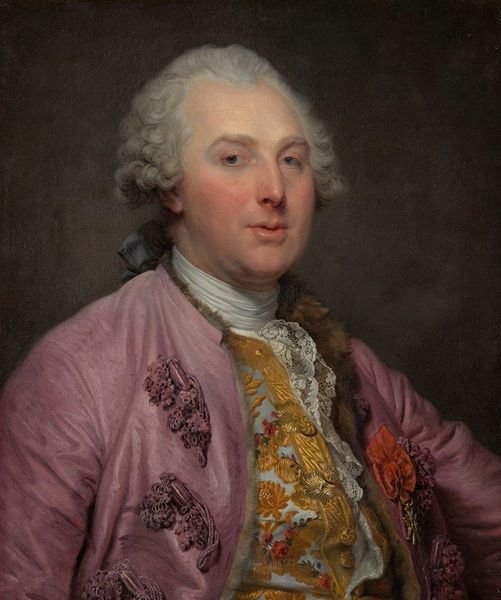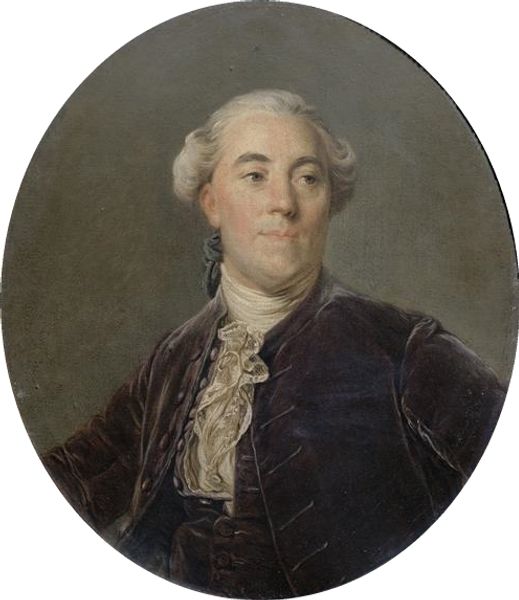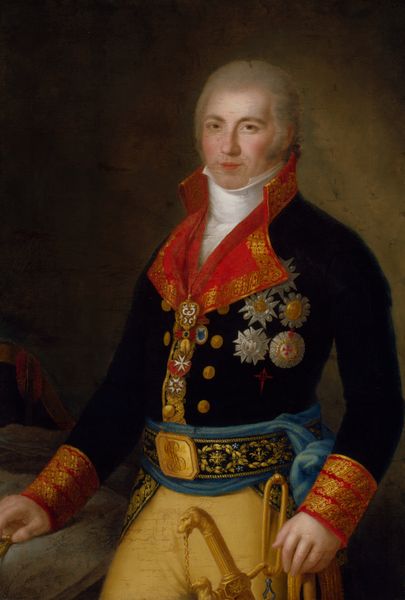
Portrait of the Russian poet Gavril Derzhavin 1795
0:00
0:00
painting, oil-paint
#
portrait
#
portrait
#
painting
#
oil-paint
#
romanticism
#
history-painting
#
academic-art
Copyright: Public domain
Curator: This is Vladimir Borovikovsky's "Portrait of the Russian poet Gavril Derzhavin," painted in 1795. The work currently resides in the Tretyakov Gallery in Moscow. Editor: My immediate impression is one of quiet authority, and pensiveness. There's a distinct aura of intellect about the subject. The somewhat muted palette adds to that feeling. Curator: Borovikovsky painted Derzhavin during a fascinating period. As a poet, statesman and a voice of the Enlightenment in Russia, Derzhavin navigated the complex politics of Catherine the Great's court, while advocating for social reform through his odes. Editor: His expression feels deliberately crafted – not entirely natural. There’s almost an attempt at conveying gravitas and official importance. That medallion really draws the eye. Is this representative of Romanticism’s complex engagement with power? Curator: Absolutely. Borovikovsky's piece is part of the shift away from the strictures of Neoclassicism. We can trace the emergence of individual emotion here, not just idealised virtue. While Derzhavin, as a subject, represents that nexus between imperial authority and intellectual thought, the romantic leanings present a softened, perhaps humanised portrait. Look at his direct gaze, as if wanting a one-to-one connection with the spectator. Editor: The maritime scene subtly placed in the backdrop does open up a very broad set of considerations concerning Russia’s then geo-political ambitions and imperial expansions of influence on the sea. This painting is loaded with subtle signifiers of Russian statehood, and Derzhavin’s contribution towards the definition of the Russian cultural landscape. Curator: Precisely! The arrangement of objects – books, quill, papers – acts as a carefully constructed mise-en-scène. Borovikovsky isn't just depicting a man; he is shaping a narrative about intellect, position, and contribution to the state. We, as viewers, decode those details through the lenses of socio-political expectations tied to imperial Russia. Editor: Thinking about how figures like Derzhavin and the institutions that upheld them, like the academy, played into Russian imperial power is a reminder that even art is rarely apolitical. The painting immortalizes its sitter and perpetuates his importance but also solidifies the historical narratives about empire, the patriarchy and so forth, for better or worse. Curator: Exactly. I’m reminded of the power imbued in images like these to define what constitutes success, service, and identity. Editor: It certainly gives a lot to think about, beyond a man and his portrait.
Comments
No comments
Be the first to comment and join the conversation on the ultimate creative platform.
